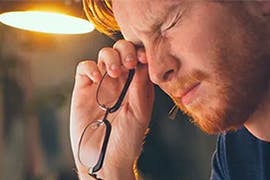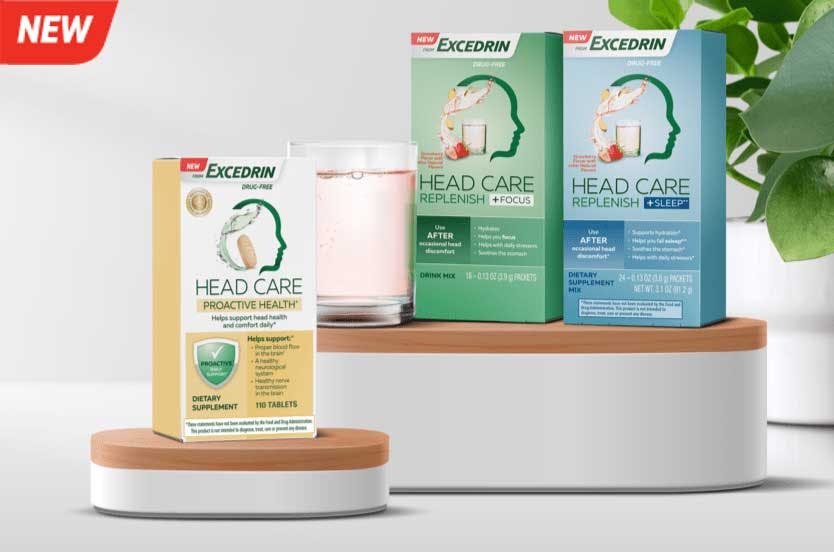NOT GETTING ENOUGH SLEEP? 5 TIPS YOU CAN TRY TONIGHT
Sleep is essential to good health. Try any of these five tips tonight to get better shut-eye.
Quality sleep is an important part of a healthy lifestyle. But for many who suffer from headaches and migraines, good sleep is even more of a must. Sleep disorders have been linked to headaches and can affect headache management.1
Here are five easy sleep tips to improve your rest.
Set a Sleep Schedule. Going to sleep and waking up at the same time every day (even on weekends!) helps reinforce your body’s sleep-wake cycle, promoting sounder sleep. To keep your schedule, it’s helpful to follow a pre-bed routine that helps you relax and tells your body it’s time to wind down. Try taking a bath, reading a book or listening to soothing music with the lights dimmed.
Make Your Bedroom a Sleep Haven. To foster healthy sleep habits, your bedroom needs more than a comfy mattress. Your body temperature naturally drops during sleep, so setting your thermostat between 60 and 67 degrees can help things along. Your bedroom should also be free from any distracting noise or light. Consider using blackout curtains, eye shades, ear plugs, white noise machines, a humidifier, or a fan to help achieve a cool, quiet, and dark sleep environment.
Get Some Sunlight. Daylight could be as important as dark nights for your sleep quality. Being exposed to sunlight during the day has a major impact on your body’s production of the hormone melatonin, which helps control your sleep-wake cycle and allows you to fall asleep easily at night.2 Don’t sit by a window at work? Get outside, even if it’s for a coffee break, or let light into your bedroom as soon as you wake up. Another option is a light therapy box. It gives off bright light that mimics natural outdoor light and is thought to help with sleep disorders.
Keep Your Hands and Feet Warm. When it’s time for sleep, your body redistributes heat from your core to your hands and feet, where blood vessels dilate to let off heat. Wearing socks to bed or warming your hands underneath your covers can help dilate blood vessels to speed the process of falling asleep.3
Be Low-Key at Night. In addition to setting a relaxing routine before bedtime, think through your daily habits. Headed to the gym? That’s good – a recent National Sleep Foundation poll showed that people who exercise regularly (particularly vigorous exercise) report better sleep than those who don’t. However, exercising can raise your body temperature and disrupt your body’s natural ability to cool itself for sleep, so if you’re working out, do so at least two to three hours before you plan on going to bed. Also, avoid heavy meals and caffeinated and alcoholic beverages two hours before bedtime.
Learn more about good sleeping tips and habits and the link between headaches and sleep on Excedrin.com.
References:
- Rains JC1, Poceta JS. Sleep-related headaches. Neurol Clin. 2012 Nov;30(4):1285-98. while irregular sleep patterns and changes in sleep patterns may be headache and migraine triggers for some.
- Mead, Nathaniel M: Benefits of Sunlight: A Bright Spot for Human Health. Environ Health Perspect, Apr 2008; 116(4): A160–A167. http://www.ncbi.nlm.nih.gov/pmc/articles/PMC2290997/
- Krauchi, Kurt, Cajochen, Christian, Werth, Ester and Wirz-Justice, Anna. Physiology: Warm feet promote the rapid onset of sleep. Nature 401, 36-37 (2 September 1999) | doi:10.1038/43366 http://www.nature.com/nature/journal/v401/n6748/full/401036a0.html#B1
References: nighttime headaches, nighttime headaches, nighttime headaches, nighttime headaches








